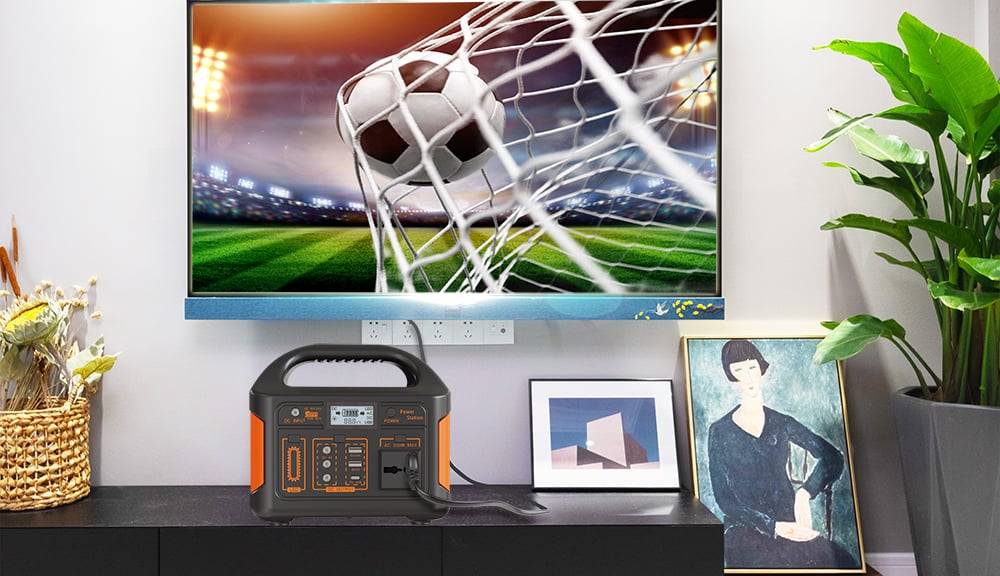Understanding the Power of Portable Power Stations
1/26/20254 min read


Understanding Output Power: The Basics
Output power is a critical concept when discussing portable power stations, as it directly influences the maximum electrical power available for use with various devices. Measured in watts, output power serves as an essential parameter that users must understand to ensure effective utilization of these power sources. One can think of output power in terms of the flow rate of water from a faucet; just as you need to control the flow of water to avoid overflow, similarly, understanding the output power helps prevent exceeding limits when connecting devices.
For instance, consider a portable power station with an output power of 300 watts. This means that the combined wattage of all devices connected to the power station must not exceed this threshold. If you connect devices that collectively require 350 watts to operate, the power station may become overloaded, leading to potential failures or issues with performance. This basic understanding of output power is crucial to avoid such scenarios. It enables users to make informed decisions when selecting devices to use concurrently with their portable power stations.
Moreover, output power is often separated into two categories: continuous output and surge output. Continuous output refers to the steady power that the unit can provide for an extended period, while surge output denotes the higher power that can be temporarily supplied to start up devices with higher initial power requirements, like refrigerators or power tools. Recognizing these distinctions can further aid users in maximizing the efficiency and performance of their portable power stations. By understanding output power and its implications, users can enjoy a seamless experience, ensuring that their devices function effectively without exceeding the station's capabilities.
The Importance of Output Power in Everyday Applications
Output power is a critical factor when considering the utility of portable power stations in various everyday situations. The significance of output power lies in its ability to dictate the variety and quantity of devices that can be powered simultaneously. Portable power stations typically measure output power in watts, which helps users understand the limitations and capabilities of their units. For instance, most smartphones require about 5-20 watts to charge, whereas laptops can demand anywhere from 45 to 100 watts, depending on their specifications. This differentiation in power requirements underlines the necessity of selecting a portable power station that can meet diverse charging needs.
In practical terms, understanding output power becomes particularly important for outdoor enthusiasts. Campers, hikers, and bikers often rely on portable power stations to keep essential devices charged, ensuring communication and navigation options are always accessible. A properly chosen power station can efficiently handle multiple devices, such as smartphones, GPS units, and even small appliances like mini-fridges or cooking gear, depending on its output capabilities.
Moreover, during times of emergencies, portable power stations can serve as a lifeline. In scenarios where electricity is temporarily unavailable, having a unit with sufficient output power ensures that critical devices, such as medical equipment or communication tools, remain operational. Preparedness plans, therefore, should consider the output power needed to sustain such devices when selecting a portable power station.
In essence, when engaging in off-grid living or embarking on outdoor activities, considering the output power of portable power stations is indispensable. This knowledge equips users to choose a station tailored to their specific requirements, ensuring reliability and efficiency in charging capabilities, whether in the wild or during unforeseen power outages.
Evaluating Your Power Needs
To select an appropriate portable power station, it is crucial to accurately assess your power needs. The first step in this evaluation involves calculating the total wattage of the devices you intend to use simultaneously. Each electronic device has a specific wattage requirement, which can typically be found on the device itself or in the user manual. To ensure optimal performance, add up the wattage of all devices planned for concurrent usage. This total wattage will guide you in choosing a portable power station capable of handling your specific requirements.
In addition to total wattage, consider the concept of surge wattage, which refers to the extra power needed when starting certain appliances, such as refrigerators or power tools. These devices often require significantly more energy upon startup than during normal operation. Therefore, it is essential to check the surge wattage specifications of your devices and factor it into your calculations. Portable power stations may have different surge ratings, so verifying compatibility is crucial for uninterrupted usage.
Furthermore, different electronics interact with output power in varying ways, influencing their efficiency and performance. For instance, devices like LED lights generally consume less power and can operate effectively on lower wattage, whereas higher-draw machines may require specific types of outputs, such as pure sine wave power. Understanding these nuances can help you prioritize which devices to use in tandem. Utilizing tools such as power usage calculators or apps can also streamline the assessment process, simplifying the calculation of total and surge wattage. By comprehensively evaluating these factors, individuals can effectively balance their power requirements against the capabilities of the chosen portable power station, ensuring reliable energy availability during outings or emergencies.
Maximizing Efficiency with Portable Power Stations
Utilizing a portable power station effectively requires a strategic approach to ensure optimal performance and longevity. One of the primary considerations is to understand the output power of the devices you plan to connect. Each portable power station has a designated output limit, and exceeding this can lead to device malfunction or diminished battery performance. To maximize efficiency, it is crucial to prioritize which devices require immediate power based on their wattage ratings. By analyzing the power needs of your appliances before use, you can avoid overloading the power station, ensuring a more stable and reliable power supply during critical times.
Another key strategy for optimizing the use of portable power stations lies in managing power consumption. Keeping your energy usage below the maximum limits not only safeguards your devices but also extends the life of the power station’s battery. Employing energy-efficient appliances and opting for low-wattage devices wherever possible can make a significant difference. It's advisable to use high-consumption devices sparingly and switch to less power-intensive alternatives when feasible. This practice not only conserves battery life but also prolongs operational time, allowing for continued use during extended outings or emergency situations.
Furthermore, taking proper care of your portable power station is essential for its durability and performance. Regularly checking battery health, keeping the unit clean, and avoiding extreme temperatures will greatly enhance reliability. For batteries that offer replaceable components, replacing them as needed should be a part of your maintenance routine. By applying these techniques, users can ensure that their portable power stations remain a dependable power source for various applications, whether for outdoor adventures, camping, or emergency preparedness.
